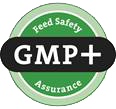- Home
- Seeds
- Fodder grasses and legumes
- SMALL GRAIN LEGUMES
- Red clover BONUS (ORG) LT-EKO-001
FOR CONSULTATIONS APPLY TO:
Commercial director
Lina Smalskienė
tel. +370 618 02 551
e-mail linak@agrolitpa.lt
Sales manager
Tautvydas Kliučininkas
tel. +370 681 35 093
e-mail tautvydask@agrolitpa.lt
Sales manager
Eglė Petkevičienė
tel. +370 626 95 458
e-mail eglep@agrolitpa.lt
Sales manager
Kotryna Nakrošytė
tel.: +370 601 39 282
e-mail kotryna@agrolitpa.lt
Red clover BONUS (ORG) LT-EKO-001
Produced in Lithuania
The early/mid early diploid clover resistant to diseases and lodging, the winner of Swiss trials
- High green mass yield
- Rapid spring growth
- Good lodging resistance
- Very good health
- Medium good resistance to clover rot
- Persistence for 3 years
- High yields of green and dry mass in all growing years
- Good seed yields
- Stem – of medium length and medium thickness
- Leaves – of medium length and width
- Flowers (heads) should be red in colour, the colour intensity may change during flowering
- Possible appearance of white flowers
- Very good persistence – three vegetative years
- Fast spring growth, moderately fast regrowth after cutting
- Good resistance to lodging
- Very good resistance to fungal root diseases, powdery mildew, a complex of viral diseases
- Medium/high resistance to clover cancer, or rot, (Sclerotinia trifolium), a complex of leaf diseases
- Seeds – variously coloured
- Possible seed yield – 400-500 kg/ha
- Seeds are harvested in the second year of growth from the second cut
- Green mass yield in the second year of cultivation – 108.2 %
- Green mass yield in the third year of cultivation – 108.8 %
- Dry mass yield in the second year of cultivation – 105.3 %
- Dry mass yield in the third year of cultivation – 107.8 %
*Yields in official variety tests in the Czech Republic (control variety is 100 %) in 2005-2007
- Yield – 5.0 points
- Germination speed – 3.5 points
- Competitiveness – 5.2 points
- Persistence – 5.6 points
- Winter hardiness – 5.5 points
- Susceptibility to leaf diseases – 2.8 points
- Susceptibility to anthracnose – 1.3 points
*According to French research (published in: Recherche Agronomique Suisse 8 (1): 2017 p. 3)
- Yield – 5.0 points (where 1 is very high or good; 9 is very low or bad)
- General impression – 3.5 points (where 1 is very high or good; 9 is very low or bad)
- Initial growth – 3.5 points (where 1 is very high or good; 9 is very low or poor)
- Competitiveness – 5.2 points (where 1 is very high or good; 9 is very low or bad)
- Persistence/longevity – 5.6 points (1 being very high or good; 9 being very low or bad)
- Winter hardiness – 5.5 points (where 1 is very high or good; 9 is very low or bad)
- Resistance to Anthracnose – 1.3 points (where 1 is very high or good; 9 is very low or poor)
- Resistance to foliar diseases – 2.8 points (1 being very high or good; 9 being very low or poor)
- Overall score – 3.98 (where 1 is very high or good; 9 is very low or bad)
*according to studies in Germany in 2011-2013 (Ergebnisse der Ertragserhebungen und Bonitierungen in den Jahren 2011 bis 2013) (Agrarforschung Schweiz 5 (7-8): 272-279, 2014)
- Yield – 5.7 points (where 1 is very high or good; 9 is very low or bad)
- General impression – 3.4 points (where 1 is very high or good; 9 is very low or bad)
- Initial growth – 3.2 (where 1 is very high or good; 9 is very low or poor)
- Competitiveness – 4.8 points (where 1 is very high or good; 9 is very low or bad)
- Persistence/longevity – 5.2 points (1 being very high or good; 9 being very low or bad)
- Winter hardiness – 3.6 points (where 1 is very high or good; 9 is very low or bad)
- Resistance to Anthracnose – 2.6 points (where 1 is very high or good; 9 is very low or poor)
- Resistance to foliar diseases – 2.6 points (1 being very high or good; 9 being very low or poor)
- Overall score – 3.89 (where 1 is very high or good; 9 is very low or bad)
*according to research in Germany: Trifolium pratense: Results of measurements and observations from 2016-2018.
The varietal parameters may differ from those indicated here when the testing circumstances differ from quondam
Recommended sowing rate: 10-15 kg/ha
Recommended sowing rate when growing for green manure: 13-18 kg/ha
Keravos sreet. 17, Kerava,
LT-38 131 Panevėžys district, LITHUANIA
Enterprise's code 168598128
VAT code LT685981219
Tel. +370 615 11 315
E. mail info@agrolitpa.lt




.JPG)

